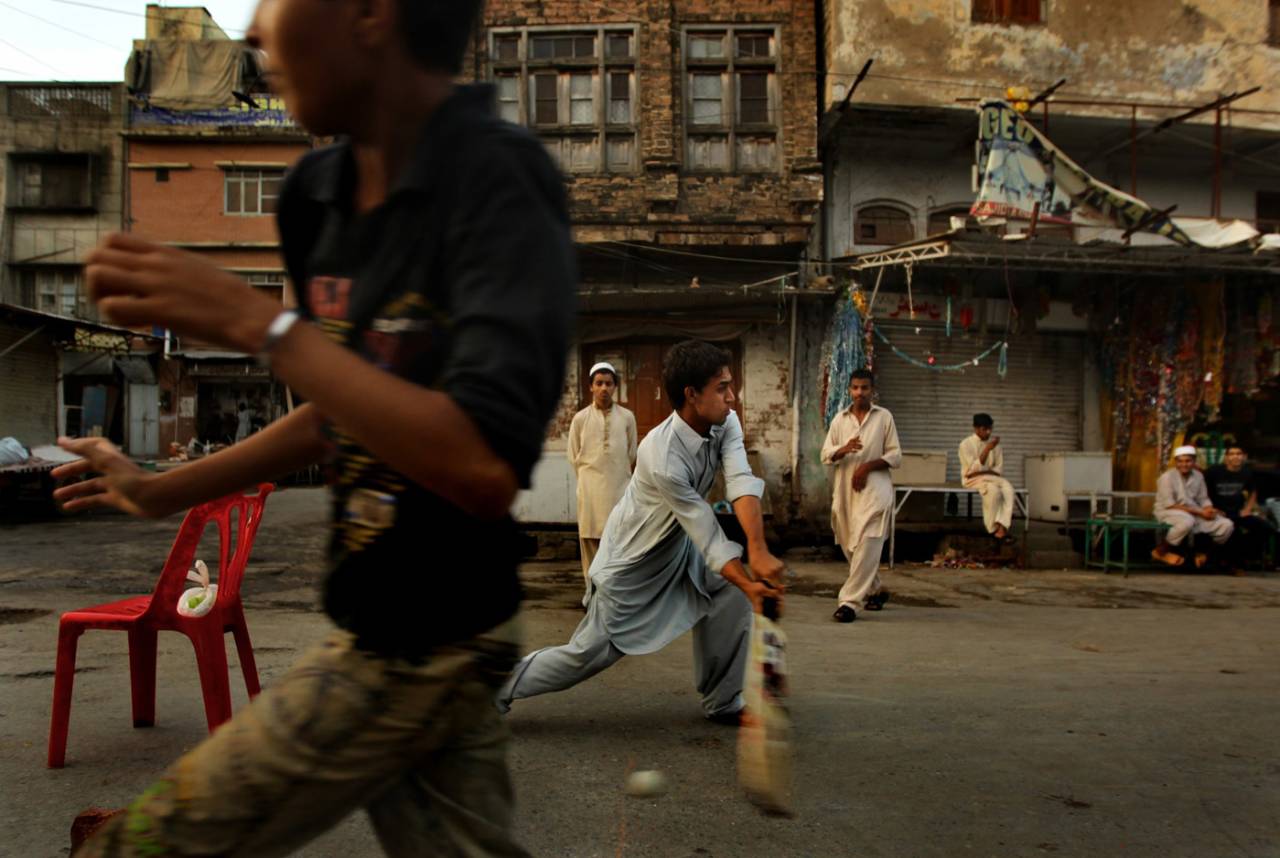"You won't see that in any coaching manual" is one of those obliquely slippery phrases that manages to deliver its core message of admiration wrapped up in a cloth of mild distaste, and is rarely heard other than on TMS or one of its many simpering fan progs. Visit a village green on an April Sunday, however, when the long shadows cast by the pavilion can preserve the frost until tea (or in this wettest of Junes, visit a field so cut up by a winter's worth of football boots and a month's worth of spikes, it would be flatter if freshly ploughed), and you may witness res and verba in perfect metaphorical alignment. That is to say, batsman and commentator conspire to give the term "agricultural" a bad name.
In village cricket, of course, the commentator is a collective comprising the occupants of the "office", namely the close fielders arranged around the wicketkeeper. It is traditional for manager and staff to keep up a running commentary on the batsman's efforts to send the ball hither and thither in order to hasten his own journey back to the warmth of the pavilion, and to start each idiosyncratic snippet of song that subsequently travels around the outfield in a sort of Mexican karaoke.
"What the f*** was that shot meant to be?" is perhaps the village equivalent of the professional commentator's "coaching manual" barb. Invariably the response runs something along the lines of "four runs". After all, there's unorthodox and unorthodox, and in cricket, a shot's value is ultimately considered in direct proportion to its outcome. Even by Sir Geoffrey.
See ball, hit ball. Or, in my case, see ball, leave ball, discover the bowler has one that cuts back sharply
While the professional may deal in reverse lap cuts in between "proper cricket shots", these are merely those shots that do not yet feature in the manual, but for every effort to execute an elegant cover drive effected by your typical Sunday batsman, five portmanteau shots will be fashioned from the leftovers of other sports they may have played, watched or perhaps simply heard tell. I've seen forearm smashes, topspin lobs, 9 irons, heaves, hoicks, flails and mows, airy wafts (or "elegant leaves"), flat-bat smacks, and dozens of others as yet nameless. Just as there are shots not yet in the manual, there are shots that never will be, and it is these shots, these Sunday inventions, these unidentifiable mongrels, these techniques practised in the Dark Net, that place where intention is never undone by lack of talent, it is these shots that feature in a sort of anti-manual.
It is in this tome, this as-yet unwritten work of cricket lore (Wisn'tden, perhaps) carried in the hearts and minds of Sunday cricketers everywhere, that we gain access to the truths of this great game. And the truth is that cricket, real cricket, is not the game played by the professionals but the one played by us lot. In the professional game, orthodoxy is challenged by finely honed athletes seeking that extra fraction of a percentage of performance, as it is in these infinitesimal advantages that games are won and lost. In real cricket, in my cricket, our cricket, orthodoxy is simply challenged.
We know what we're meant to be doing, and while aiming to hit the top of off stump or bowling down the corridor of uncertainty is the theory, practice tells us that one of the most dangerous deliveries is the full toss. It's not simply the power of the unexpected so much as the raft of opportunities it offers the batsman. Confronted with an embarrassment of sure-fire scoring options the most common reaction is to gently lob it to the nearest fielder for catching practice. "Filthy", is the word you'll hear: perfect, is the truth.
As batsmen, we know we ought to play straight, through the line, foot to the pitch, elbow high, and all that gallimaufry, but more often than not we simply stand and deliver. See ball, hit ball. Or in my case, see ball, leave ball, discover the bowler has one that cuts back sharply.
"Not a good leave," opined the office manager. Au contraire, it was an excellent leave - confident, considered, comprehensive. If only I'd played my natural game, namely no foot movement, play very late, watch bowler begin celebrations, before, out of nowhere, jamming my bat down to meet the ball in desperation, then I would have lived to face the next ball. But no, I played "properly". Textbook, one might say. Unfortunately the bowler had been reading the same textbook, and he was a few pages ahead of me. If only I'd trusted the occult knowledge of the Dark Net.
Pete Langman is the author of The Country House Cricketer. All profits go to help fund research into Parkinson's disease. @elegantfowl
